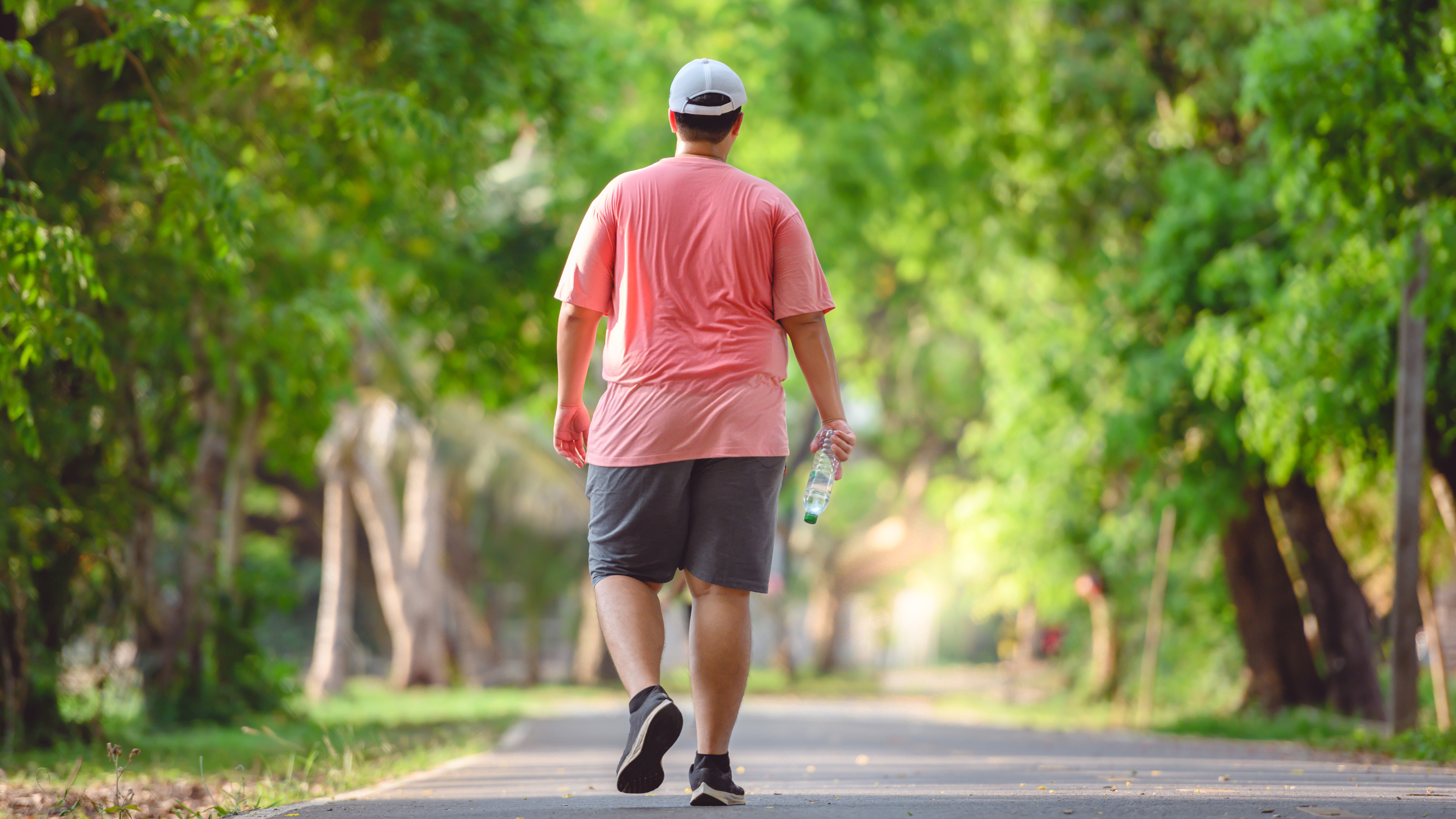How to burn calories while walking: Expert tips for your treadmill or outdoors
Start burning fat with this low-impact exercise

Walking can be a great way to burn calories, particularly if you are new to exercise or coming back from injury. It's a low-intensity exercise, which makes it perfect for beginners.
In this guide we explain how to burn calories whether you plan to walk outdoors, in the gym or whilst at work using the best under desk treadmill. Walking is also a really effective way to prevent injury as we get older and helps to prevent muscles from wasting away whilst improving bone strength.
But although going for a walk or jumping on a treadmill is good exercise there are tricks to help you burn calories more effectively.
A report in Sports Medicine concluded that walking regularly at a faster than normal pace can help with weight loss in the long term.
Meanwhile, a study published in the Journal of Primary Care and Community Health tested out a program of interval walking four days a week for 34 minutes. This was made up of 16 minutes of moderate to high intensity walking with a total energy expenditure of 776 kcal per week. Walkers who continued the program for three months had increased aerobic fitness and reduced blood pressure compared to those who did no training.
Why is walking good for you?
Walking has always been prescribed as one of the main ingredients for a successful and sustainable approach to fat loss. This is simply down to the fact that moving more will burn more calories and help you achieve a calorie deficit which equates to fat loss. Walking is accessible by most people and freely available: all you need is time.
Personal trainer Kirsten Whitehouse, of Wolf Approach Fitness, explains how to make your walking workout more efficient.
Sign up for breaking news, reviews, opinion, top tech deals, and more.

Calorie-burning walking exercises
Kirsten says your body uses glucose to fuel the muscles during exercise. If it needs energy fast during higher intensity workouts, it breaks down the carbohydrates in your body first, which are stored as glycogen. By comparison, fat stores are used by the body during lower intensity training.
A gram of carbohydrates has only 4kcal compared to a gram of fat, which has 9kcal. In theory, training in a "fat-burning zone" which you can monitor with one of the best fitness trackers, would be the best way to achieve a calorie deficit.
If you are set on staying within your fat-burning heart rate zone you should be able to do all of the below exercise variations at a standard walking pace, because the fat burn zone is designed to be at such low intensity that you can almost exercise indefinitely in it.
To calculate an approximation of your fat-burning heart rate zone, start with 220 minus your age. This gives your maximum heart rate level. Your ideal fat-burning zone is 60 to 76% of this, and this is the heart rate area you want to stay in while you walk. However, this is only an estimation and will vary depending on your fitness levels and diet.
If, however, the thought of marching on your treadmill for two hours a day fills you with dread then you may wish to consider pushing your heart rate higher to burn more calories in a much shorter time.
Of course, doing something is always better than doing nothing, so whether you go hard at it, or take the more gentle, steady approach - the most important thing is that you are walking more. Kirsten reiterates you will definitely see results if you are consistent.
When exercising it is important to always warm up your muscles and raise your heart rate slowly by increasing the pace over a number of minutes. Start by walking at a slow pace for five minutes before doing any faster or harder work.
At the end of the training, cool down to avoid blood pooling and feeling dizzy. Gradually lower the pace and intensity of the workout over five minutes before stretching.

Higher intensity walking variations
- Pace
Try speed walking at a fast pace at the upper level of your ability. You can increase the amount on time spent doing this each session. You could start by walking five minutes at an easy pace, then five minutes at a fast, hard pace, followed by a five minute easy pace cool down. You could increase the number of repetitions or the length of time you walk hard for each session.
- Resistance
Try wearing a weighted vest or doing a farmer's carry, by holding a kettlebell, dumbbell, or other weight in one or both hands (even your shopping). Doing this whilst walking outdoors or on the treadmill increases inefficiency by making it more difficult. It will push your heart rate up while you are strength training at the same time.
Carrying the weight in one hand only and swapping regularly will also force your core to engage more and help increase stability and tackle any possible body imbalances. Again, try this for five minutes, and each session either vary the weight or the length of time.
- Environment
Altering the incline on a treadmill, or going out and finding hills to walk up will force different muscle groups to work harder and increase your heart rate. Gradually increase the amount of time you are walking uphill as well as the elevation.
If you are outdoors you could try hill reps where you walk up and down the same hill multiple times. There is also some evidence that training regularly in cold temperatures increases fat burn so there is no excuse not to use your garage treadmill throughout winter.
With all of these walking variations the key is to have progression in your programme. Once it starts to feel comfortable then increase the intensity so you stay in a constant fat burning state.

Lily Canter is a UK Athletics running coach, ultra-runner and a freelance running and fitness journalist who writes for TechRadar, Runner's World, Fit&Well and Live for the Outdoors, among others. Her ultra-running credits include running 250km across Tanzania, and placing first female in her inaugural 100km race.